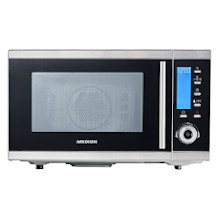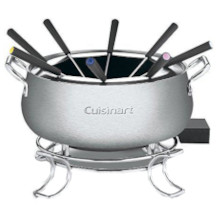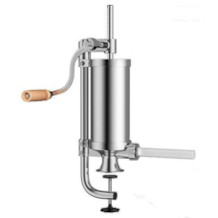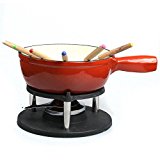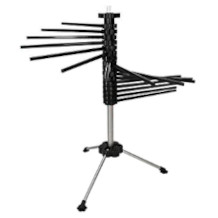Soda maker purchasing advice: how to choose the right product
- What you need to know
- Soda makers remove the need to transport plastic soda bottles – more convenient and better for the environment.
- The initial cost gets paid back over time with low running costs.
- The best soda makers are easy to use – simple controls and uncomplicated installation.
- The more regularly you maintain your soda maker, the longer it will last.
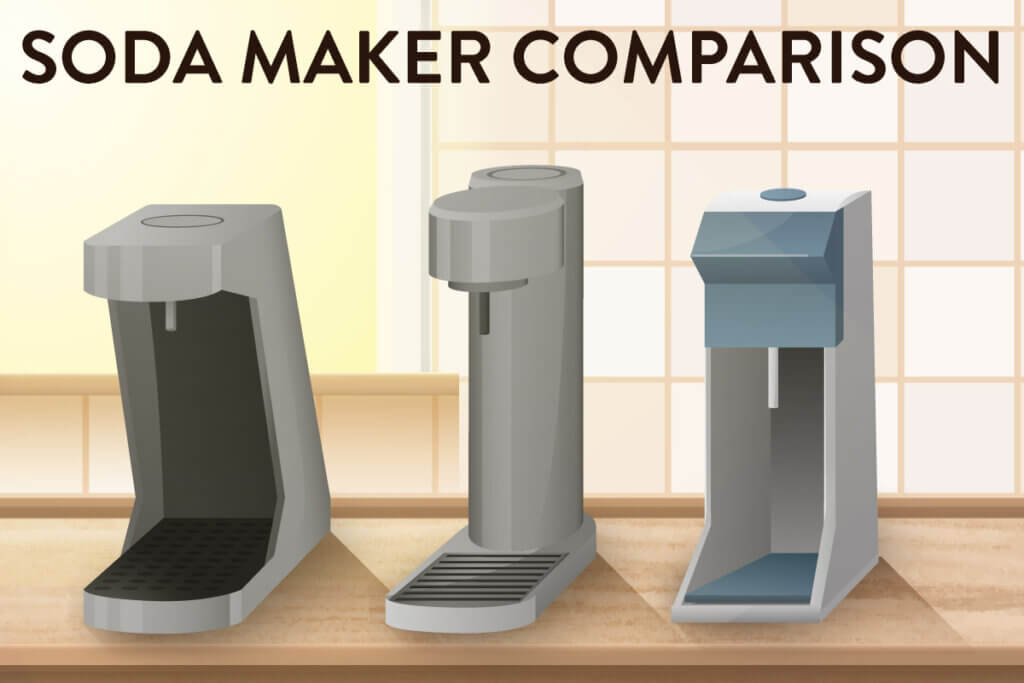
No more plastic bottles
Sales for sparkling water have been steadily increasing in the last few years. In the US, the industry has nearly doubled since 2015, with over $3.2bn forecast in sales for plain sparkling water in 2022 (Statista). Lugging these bottles from the store to home is expensive and inconvenient. More importantly though, the environmental impact of all these plastic bottles is huge, both in terms of transportation and the plastic itself. Soda makers offer a more convenient and more eco-friendly alternative to plastic soda water bottles. According to an analysis by Carbon Trust, soda makers like SodaStream are 75% less carbon-intensive than standard PET plastic bottles sold in the UK.
Advantages
Soda makers aren’t just eco-friendly, they’re also softer on your wallet. While they are of course more expensive to buy initially, they are much cheaper in the long term. In general, you’ll have paid yourself back after a year of using one instead of buying soda bottles – for small households this might take two years. Soda makers are also space savers – you won’t need to pile up plastic bottles. Having sparkling water without needing to go to the store is time saving and convenient. In fact, soda makers need less than a minute to carbonate your drink and are very simple to use.
Soda makers also mean you can use your own tap water. This can have a lot of health benefits – tap water is full of minerals and if you live in an area where you have been safely drinking it, then you’ll know it is harmless. Bottled water in supermarkets often is less mineral rich, and you don’t always know where it has come from – tap water is tested more often and more strictly than bottled water.
Soda makers also let you add flavorings using syrups and concentrates. There’s a wide range of flavors to try out. From cola to kombucha, the selection is huge.
One thing to note is that if you like your soda extra fizzy, a soda maker might not be for you. In general, soda makers produce drinks with a lower carbon dioxide content than industrially produced sodas. Home soda makers don’t reach the same pressure level and have an auto air pressure vent.
Advantages
- Time-savers
- Eco-friendly
- Cheaper in the long run
- Personalize your soda
- Space-savers
Disadvantages
- Less CO₂ than bottled soda
- CO₂ canisters need to be replaced eventually
How do they work?
Many soda makers work without using electricity. They have a button on either the top or the front which when pressed adds carbon dioxide into the liquid. The back of the machine is usually removable to access the CO₂ canister. The gas comes out through a nozzle into a bottle which needs to be fitted in the bottle holder. Soda makers either have a screw top or a bayonet locking mechanism to keep the bottle secure when it is being pressurized. Once the bottle is secure, pressing the button either once or multiple times will release carbon dioxide into the liquid inside. The CO₂ mixes with the water, producing a carbonated drink.
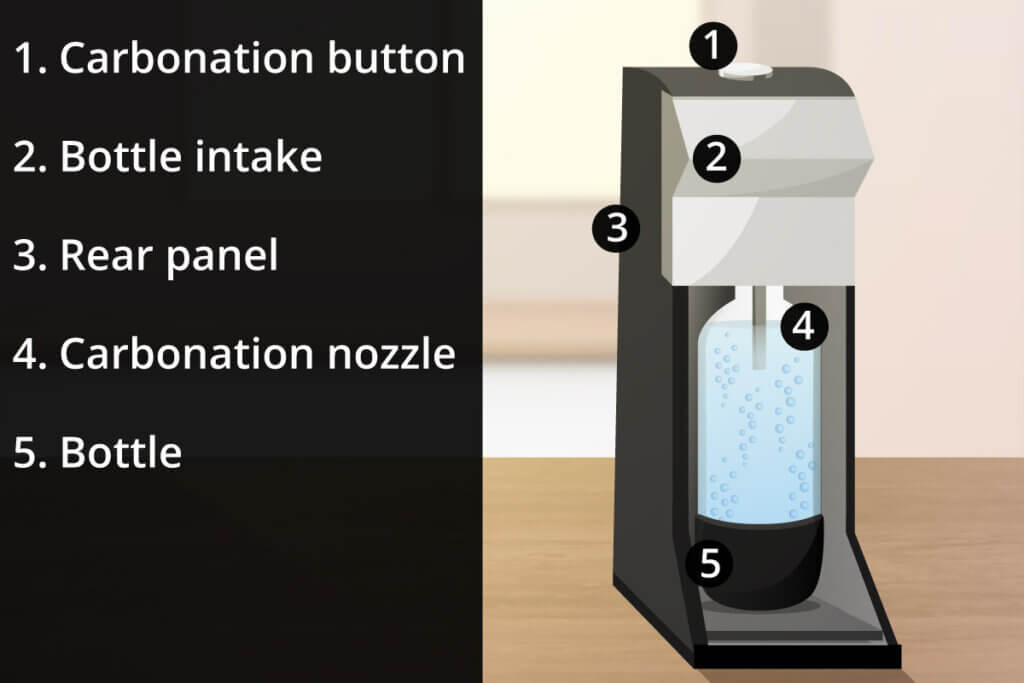
CO₂ canisters
You will have to swap out empty carbon dioxide canisters relatively regularly, depending on how much you use your soda maker and how big the canisters are. SodaStream canisters can make up to 60L (approx. 16 gallons) of sparkling water and last between four and eight weeks. Don’t throw your empty canisters away! You can swap them for full ones at many stores or even by mail – better for the environment and for your wallet.
Buying tips
Soda makers should be quick and easy to use. When making a choice from the range of models on the market, there are a few things to consider such as material, capacity, stability, dishwasher-suitability, and of course, appearance.
Types of soda maker
There are a few different types of soda makers:
- Classic soda makers
- Electric soda makers
- Piped soda makers
Classic soda makers work with the touch of a button. They are compact, easy to set up, and work by pushing a button to release CO₂ into water. Electric soda makers are a step up from this. They look functionally the same as classic soda makers, but they carbonate drinks automatically. These soda makers are considerably more expensive and much less common than the classic style – it is up to you whether you want a little more luxury for a lot more money.
Piped soda makers are generally for professional or commercial use. They have to be integrated into kitchen units. Instead of a tap, these variants are equipped with a soda tap, a cooling and bubble unit, and a filtration unit.
Bottle material: plastic or glass
Glass bottles are easy to clean and heat-resistant, so you can put them in the dishwasher. They are also more stylish, and some people believe that the taste is superior. However, they are heavier than plastic bottles and can smash, so they aren’t great for children. Plastic bottles are great to take out and about with you as they are lighter and can’t be broken as easily. If you opt for a plastic bottle, make sure it is BPA-free. Plastic bottles aren’t suitable for dishwashers as they can degrade. The big difference between the two is in price – plastic is cheaper than glass.
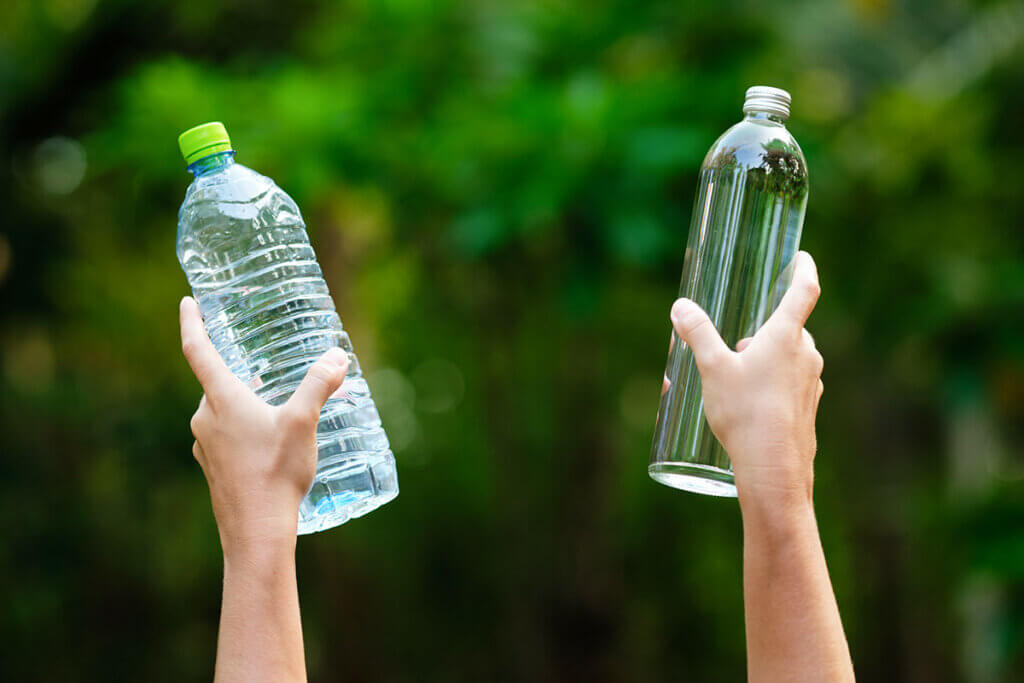
Fastening
One important factor to consider is how you secure the water bottle to the soda maker. Some models mean you only need one hand to secure the bottle, others two. As a basic rule, snap fasteners are easier to use because they automatically secure the bottle. Screw fasteners need to be, as their name suggests, screwed in. There are also some soda makers that combine these two mounting mechanisms in bayonet fastenings – they are snap and screw mechanisms. For children and older people, we can recommend snap fastening soda makers.
Capacity
In the past, plastic bottles had larger capacities than glass bottle soda makers. However, nowadays you can get both materials in up to 1 liter bottles (33,8 ounces). This said, often you’ll find that glass bottles are smaller than plastic bottles. For example, SodaStream only has glass carafes in 620 ml (21 ounces) whereas they sell 1 liter plastic bottles.
Are the bottles dishwasher-safe?
Most soda maker parts can be cleaned in the dishwasher. The only thing to watch out for is not to put anything made with PET plastic in there, as this kind of plastic degrades if it reaches above 122 °F (50 °C).
Stability
Making sure you get a stable and durable soda maker is important. Not only do you want your machine to last for years, you also don’t want it to be flimsy when you are using it every day. In general, housings are either made from plastic or stainless steel. Plastic models are cheaper, whereas stainless steel housings are more durable – a well-designed soda maker will be stable no matter the build material.
Soda makers for kids
There is a wide range of soda makers on the market nowadays. Overall, making a decision will often depend on your personal taste and needs. You can get brightly colored soda makers which are especially fun for families, but more neutral designs will fit into any kitchen. This said, getting a fun design can help encourage your kids to drink water.
CO₂ dosage
Most soda makers come with a CO₂ cartridge, but you will eventually have to buy more. Always having a spare to hand is a great idea – normally, cartridges can make up to 60 liters (16 gallons) of soda.
When choosing a soda maker, you’ll have to decide whether you want to be able to manually choose the CO₂ dosage or have an automatic carbonation system. Some soda makers have a dosage lever which shows exactly how much carbon dioxide you’re putting in your drink. This is a useful analogue system, but if you want an even easier system then go for a fully automatic soda maker. You can set different fizziness levels on these electronic machines – you just push a button, and the automatic system will make the drink according to the pre-set carbonation level. There are also some fully manual soda makers, but they can take a bit of practice before you get your bubble levels just right!
Accessories
There are quite a few accessories that can come with soda makers. Some sets include things like syrups, brushes, and cleaning solutions. Most soda makers will always come with a CO₂ cartridge and a bottle or two – you can always buy extra accessories afterwards.
One extra accessory that makes sense, especially if you have a glass bottle soda maker, is a drying rack with a drip tray. These racks keep your kitchen tidy and stop the countertops from getting wet.
Bottle brushes make cleaning the inside and outside of your soda bottles easy. They are also great for other household cleaning tasks.
Maintenance tips
Caring for your soda maker properly is essential if you want it to last for years. The most common part to fail is the carbonation button, so take care to use it gently. If the pressure is too high you will hear the blowoff valve pop, so don’t press the button any more after that.
Cleaning
Regular cleaning is crucial if you want your soda maker to last. At the very least, rinse out your bottles with hot water after every use, or better still, use a cleaning brush. You should wipe your soda machine down with a wet cloth about once a week.
Limescale
If your soda bottles aren’t dishwasher safe, then you should use a special cleaning agent or citric acid to remove any limescale build-up. To do this, fill the bottles with a mixture of warm water and the cleaning agent before putting it into the soda maker. Add some carbonation and leave the bottle to sit in the machine for 15 minutes. Afterwards, rinse the bottle thoroughly and scrub inside with a cleaning brush.
Remember: not all bottles are dishwasher safe. PET plastic degrades at 122 °F (50 °C) so only use lukewarm water and dish soap. Don’t put them in the dishwasher, otherwise you can release some harmful chemicals.
Other tips
Here are a few extra useful hints when it comes to using your soda maker:

Cold water
The colder the water, the more carbonated it will be. Liquids at lower temperatures absorb more gas, so using cold water produces better results with less CO₂ needed. Using cold water can also prevent any food safety risks when you put your fizzy water in the fridge. If you put warm things directly into a refrigerator, harmful bacteria can form.
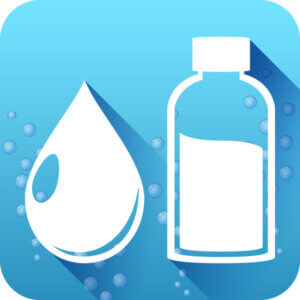
Not just water
Soda makers can be used to make things other than sparkling water. The most common alternative is to add a flavor syrup afterwards. There is a huge range of flavorings on the market – you can turn your sparkling water into lemonade, cola, or even kombucha! Some soda makers even let you carbonate liquids other than water, but most should only be used with water.
Adding syrup at the right time
You should only add syrup or any other flavorings after carbonation. Unless you have a soda maker that can specifically handle other liquids, you should only put water in the soda bottle to carbonate. If you don’t, you can end up with overflowing bottles, a clogged carbonation nozzle, and a sticky soda machine.
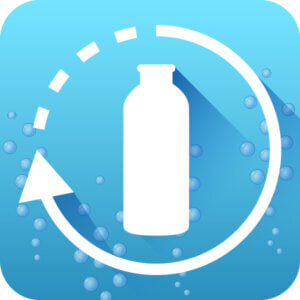
Shelf life
Soda makers themselves can last for years and years, but their plastic bottles need to be replaced after three or four years. PET plastic bottles begin to degrade and become less hygienic after about five years. You should also get rid of any carbonated water if it has been left at room temperature for more than 24 hours.
Images 1-2: © FinalCheck | Image 3: © glazunoff / stock.adobe.com | Images 4-6: © FinalCheck

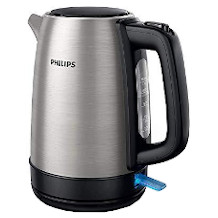
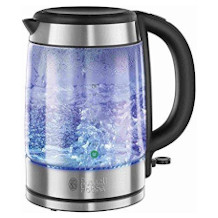
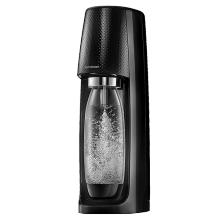
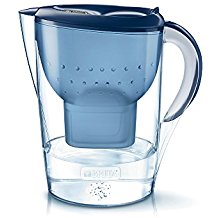
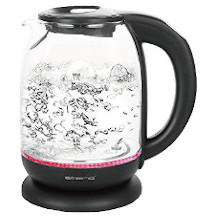
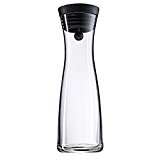
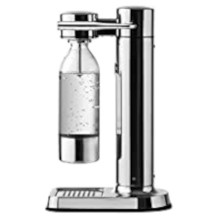
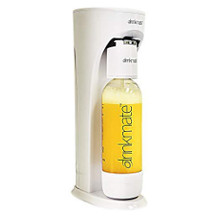
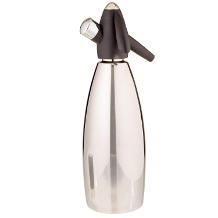
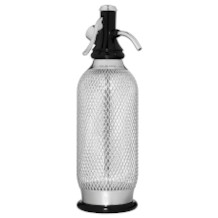
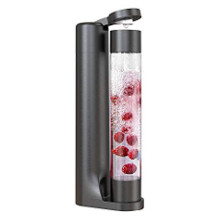
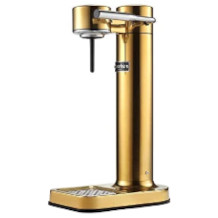
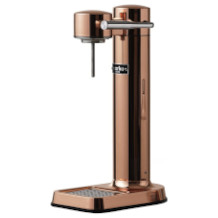
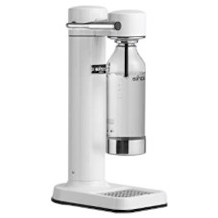

 3,749 reviews
3,749 reviews

